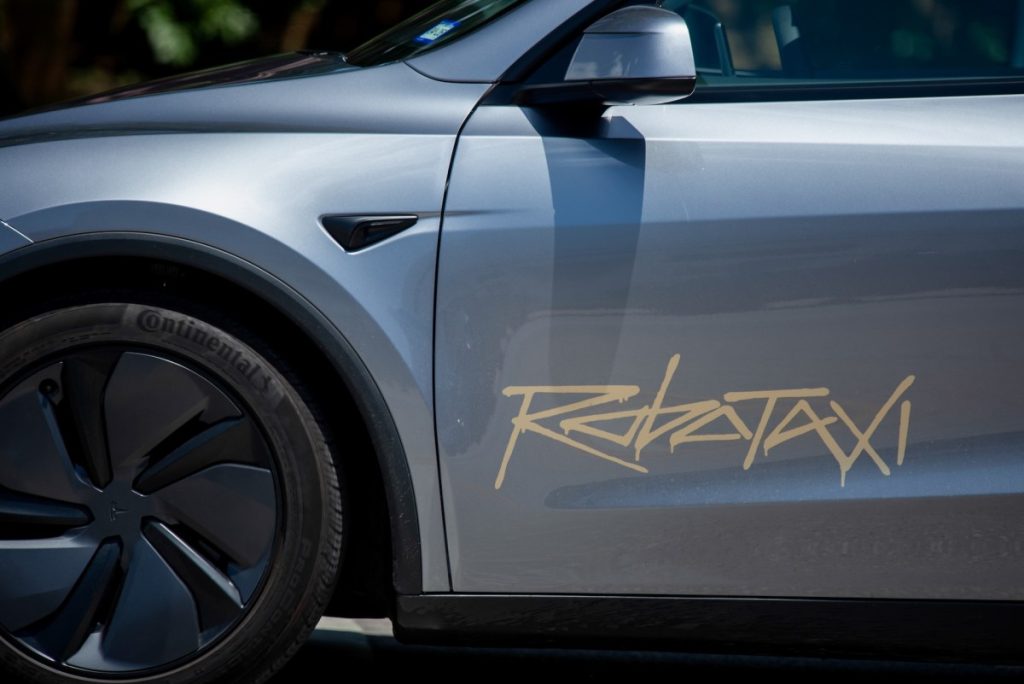In an era where autonomous vehicle technology is rapidly advancing, Tesla’s ambitious foray into the world of robotaxis has faced immediate scrutiny. After officially launching its robotaxi service in Austin, Texas, the automaker found itself in the spotlight of federal regulators, specifically the U.S. National Highway Traffic Safety Administration (NHTSA). The agency reached out to Tesla following reports of the vehicle’s questionable behavior while on the streets.
The Launch of Tesla’s Robotaxi Service
On Sunday, Tesla kicked off its paid rides in South Austin, marking a significant milestone in its quest to revolutionize transportation with autonomous technology. While the service is currently limited to invited customers, it serves as the initial real-world testing ground for Tesla’s much-touted robotaxi capabilities. The vehicles operate using an unsupervised version of Tesla’s Full Self-Driving (FSD) software, which has garnered both excitement and skepticism from the public and experts alike. Unlike the traditional FSD that requires driver supervision, the robotaxis are designed to navigate and transport passengers without any direct human input, although a safety monitor is present as a precautionary measure.
Federal Response and Safety Concerns
The NHTSA’s involvement follows multiple reports and videos emerging online that showcase the Tesla robotaxis allegedly violating traffic laws, including speeding and swerving into oncoming lanes. These incidents have raised alarms about the safety and reliability of Tesla’s autonomous technology. The agency confirmed its outreach to Tesla, stating, “NHTSA is aware of the referenced incidents and is in contact with the manufacturer to gather additional information.” This highlights the government’s role in assessing new automotive technologies to ensure they meet stringent safety standards before being widely deployed.
Safety is a paramount concern, especially with autonomous vehicles on the roads. According to the NHTSA, under U.S. law, the agency does not pre-approve new technologies or vehicle systems; manufacturers must certify that their vehicles comply with the NHTSA’s rigorous safety requirements. If any safety defects are reported, the NHTSA investigates and takes appropriate actions to protect road users.
Incidents and Public Perception
As the launch unfolded, observers noted unsettling behaviors exhibited by the robotaxis. Ed Niedermeyer, an automotive expert and author of “Ludicrous: The Unvarnished Story of Tesla Motors,” reported instances where robotaxis abruptly hit their brakes for no apparent reason, particularly when approaching police vehicles parked along the route. Such unpredictable behavior raises significant concerns about how the vehicles interpret their environment and respond to real-world driving situations.
Videos of the incidents have quickly circulated online, amplifying public scrutiny. Some show the robotaxis speeding beyond legal limits, potentially endangering passengers and pedestrians alike. A video shared on social media even showcases a robotaxi swerving into the wrong lane, a maneuver that could lead to serious accidents. These accounts reflect a critical moment for Tesla as it navigates the complex challenges of deploying fully autonomous vehicles in real-world scenarios.
Market Reaction
The market’s response to Tesla’s robotaxi service has been mixed, with investors and analysts closely monitoring the situation. On one hand, there is an undeniable enthusiasm for the potential of autonomous vehicle technology to reshape public transportation. A recent market analysis estimated that the global autonomous vehicle market is expected to reach $557 billion by 2026, driven largely by advancements in software and artificial intelligence [Statista]. However, incidents like those reported in Austin can have a chilling effect on investor confidence, particularly given Tesla’s high-profile nature.
Consumer attitudes are also a pivotal factor. Many potential riders may feel hesitant to utilize robotaxis if they perceive them as unsafe. The trust factor in autonomous technologies is crucial, and Tesla will need to demonstrate that its vehicles can operate safely and efficiently in diverse and unpredictable environments. As Tesla continues with its rollout, the balance between innovation and safety will be closely monitored, making the next steps critical for both the company’s reputation and the evolution of autonomous driving.
Conclusion
Tesla’s entry into the robotaxi market has opened a new chapter in the automotive industry, pushing the boundaries of what is technologically possible. Yet, as evidenced by the immediate federal scrutiny and public concerns over safety, the transition to autonomous transportation is fraught with challenges. It is clear that the coming months will be pivotal for Tesla, as it confronts regulatory hurdles while striving to solidify its position as a leader in autonomous vehicle technology.
Quick Reference Table
| Item | Details |
|---|---|
| Launch Location | Austin, Texas |
| Regulatory Agency | NHTSA |
| Robotaxi Features | Unsupervised FSD, Safety Monitor |
| Reported Incidents | Speeding, Wrong Lane Swerving |
| Market Value Projection | $557 billion by 2026 |
| Author for Analysis | Ed Niedermeyer |
As Tesla navigates this critical phase, the implications for not just the company, but the entire autonomous vehicle industry, remain profound.

